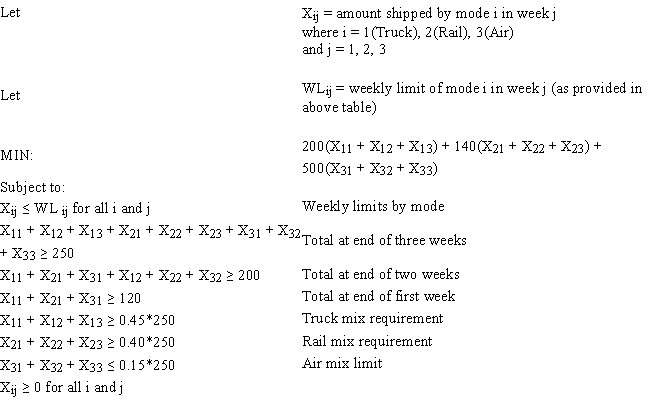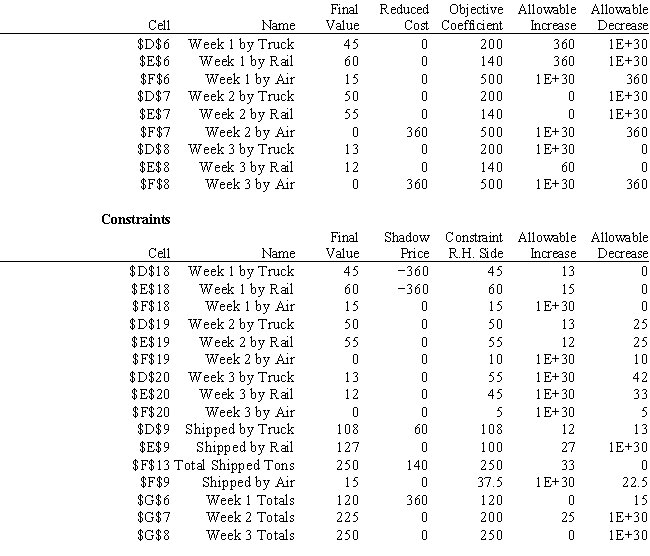Exhibit 4.1
The following questions are based on the problem below and accompanying Analytic Solver Platform sensitivity report.
Carlton construction is supplying building materials for a new mall construction project in Kansas. Their contract calls for a total of 250,000 tons of material to be delivered over a three-week period. Carlton's supply depot has access to three modes of transportation: a trucking fleet, railway delivery, and air cargo transport. Their contract calls for 120,000 tons delivered by the end of week one, 80% of the total delivered by the end of week two, and the entire amount delivered by the end of week three. Contracts in place with the transportation companies call for at least 45% of the total delivered be delivered by trucking, at least 40% of the total delivered be delivered by railway, and up to 15% of the total delivered be delivered by air cargo. Unfortunately, competing demands limit the availability of each mode of transportation each of the three weeks to the following levels (all in thousands of tons):  The following is the LP model for this logistics problem.
The following is the LP model for this logistics problem. 

-Refer to Exhibit 4.1. Of the three percentage of effort constraints, Shipped by Truck, Shipped by Rail, and Shipped by Air, which should be examined for potential cost reduction?
Definitions:
Row Titles
Descriptive headers placed at the beginning of rows in a table or spreadsheet, often used to indicate the content or category of that row.
Colon
A punctuation mark (:) used to precede a list of items, a quotation, or expansion or explanation.
Equal Sign
A symbol (=) denoting mathematical equality between two expressions.
Formula
An expression that calculates the value of a cell in spreadsheets and mathematical or scientific contexts.
Q8: Refer to Exhibit 11.9. What is the
Q11: The Chapter One "The World of Management
Q17: What is the constraint for node 2
Q38: A manager wants to ensure that
Q41: A constraint which cannot be violated is
Q49: Given the following Risk Solver Platform (RSP)
Q59: An investor has $500,000 to invest and
Q61: Refer to Exhibit 7.4. Based on the
Q67: Draw the network and indicate how many
Q77: Polynomial regression is used when<br>A)the independent variables